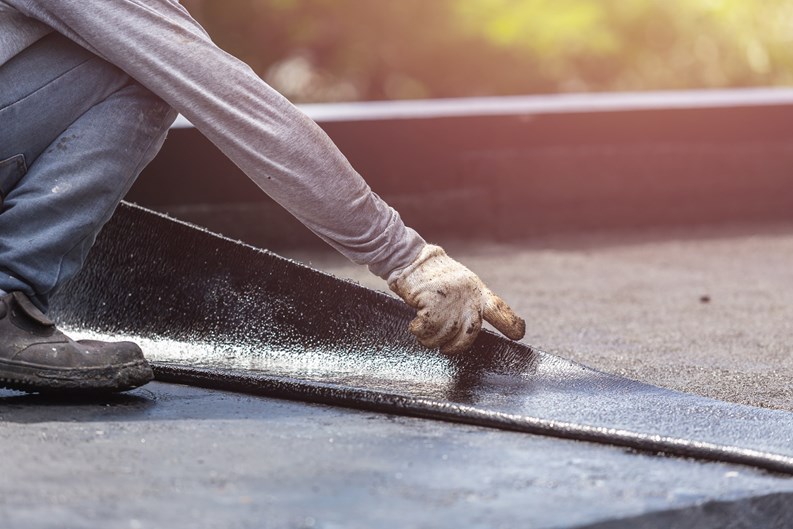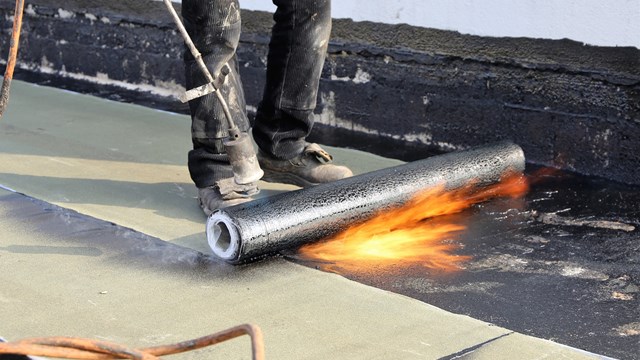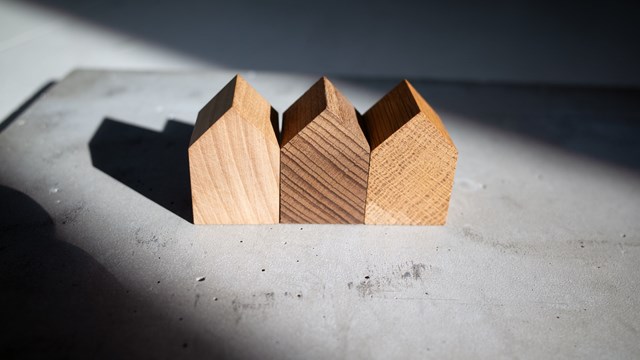Nothing lasts forever, not even your roof. While roofs have a relatively long life compared to other building systems and components, at some point they will need either partial or full replacement. Here are the facts and factors you and your community need to know when your roof’s useful life starts winding down.
Roof Life
Depending on the type of roof and its slope, which could range from flat to steeply pitched, a roof should last between 30 and 50 years. Roofs may be composed of several layers, known as built-up roofing, or they may be composed of tiles or shingles. Each component has different benefits and weaknesses, and may vary somewhat in actual life span, depending on climate, construction, proximity to water, and general wear and tear. As a major building system and an important building envelope component, it’s imperative that your roof be cared for and maintained at the highest level. A leak on your roof may ultimately result in serious problems all the way down to your basement and foundation—to say nothing of the building’s interior systems and individual units.
Replacing a Roof
“The process of roof replacement in a multifamily building begins with a conversation about your building,” says Antonio Argibay, principal of Meridian Design Associates, an architecture, engineering, and design firm located in New York City, with projects throughout the northeastern United States and Florida. “We must also consider what other improvements might be related to a roof replacement, such as insulation for better thermal performance and cost savings. If the purpose of the roof is changing from its primary use—keeping water out—to a more recreational use—such as a roof deck—the modifications due to use must be planned first, as they are the new driver of what the replacement roof will look like.”
“A complete roof replacement is the ideal time to address any other potential upgrades while access can be provided to other building systems,” says Michael Popeck, building design manager, northeast, for GAF Building & Roofing Science, a national roofing company headquartered in Parsippany, New Jersey. “Thermal insulation is usually the first upgrade discussed, because the concept is easy to understand. As you increase thermal resistance, you typically increase the thermal performance of the building. A roof replacement is typically the time to address building insulation, as you have access to either add insulation within the exterior roof framing, or increase the amount being added within the roofing assembly itself. Often overlooked is the potential to address air and water vapor transmission from the building through the roof. Installation of an air and vapor retarder on the conditioned side of the thermal insulation can greatly improve thermal efficiency and prevent any problems due to the movement of air through the structure which can carry moisture to unintended locations.”
The process is complicated and exact. Typically, an engineer or architect is hired by the association to create drawings of construction details and provide a bid specification. “These bid specifications are sent to several contractors to acquire ‘apples to apples’ proposals for the board’s review and comparison,” explains Matthew Zachor, senior project manager with National Contractors located in Ewing, New Jersey. “The board will then conduct interviews with contractors before choosing the contractor they wish to work with on their project.”
Timing is all-important when it comes to both roof replacement and to protecting other systems that could suffer damage as a side effect of roof disrepair. “When a roof is beyond repair,” Zachor continues, “you will notice things such as shingle damage (loose, cracked, curled, missing, or mossy shingles); damage or discoloration around vents, chimneys, or skylights; sheathing decay; attic leaks; sagging areas; blistering or peeling paint caused by poor ventilation; grit in the gutters; ceiling and wall stains on the interior; signs of mold or mildew.” That’s certainly the time to act.
Maintaining Integrity While
Replacing Your Roof
Roof replacement is a tricky business. The interfaces between the roof and other critical building envelope systems may be broken or severed for some period of time during replacement, potentially leading to breakdowns in those adjacent building envelope components.
“The roofing contractor is responsible for keeping the building watertight at the end of each day,” says Popeck. “They will usually look at the weather and plan the day’s work accordingly so they only remove as much roofing as possible to replace by the end of the day or when adverse weather is expected. The transition from new to old is done by a night tie-in, which is removed at the beginning of the next day.”
“There are many adjacent considerations for roof replacement,” says Argibay. “There is a lot to be concerned about depending on what the structure is made of, for example. It could be wood, steel deck, or, more typically, concrete. We also must consider all flashing, including but not limited to perimeter waterproofing around pipes, edges, and generally anywhere the roofing membrane meets another material. All these may need to be removed. The process should be done by experienced workers who can best determine temporary measures tailored to the time of year, schedule, actual material, coordination with other trades, etc. In multifamily projects, where it is impractical to speak to every tenant, it’s important to provide notices to tenants and inform them of when work is happening on the roof.”
“We protect a building’s integrity by placing tarps and/or wooden boards around the exterior to protect landscaping below from any falling debris, as well as covering HVAC systems without blocking them,” says Zachor. “A project notice is placed on all resident doors notifying them of the project start date with a list of recommendations such as removing items from the attic, wall décor and fragile items from shelves that can fall caused by vibration, as well as moving everything from their patios and decks prior to the start date. All resident vehicles must also be moved to an area designated by the association.”
Getting it Done
The steps and process for roof replacement may vary by building size, building type, and roof type, but no matter the combination of variables, the urgency of working quickly and efficiently remains the same.
“In a typical renovation of low- to mid-rise buildings,” says Argibay, “material can be hoisted via a street crane. In a high-rise, material is brought via the freight elevator to the highest possible area then brought up manually or using a roof hoist. In all cases, a sidewalk bridge to protect pedestrians must be erected. Workers typically use the freight elevators to the nearest floor with roof access.”
“The length of the project is usually dictated by a building’s size and complexity,” says Popeck. “The length will vary from one project to another. The bulk of the replacement work will be completed by a large crew that will take care of the removal and replacement each day. Residents can typically expect to experience the most disturbance (usually noise) in the early hours of the workday when the demolition work is being completed. There is usually a lot of banging as all the old materials are removed and lowered to the ground. By about the middle of the day the disturbance will be much less, as the roof reinstallation work, which is much less intrusive, progresses. The residents will also likely encounter some restrictions around the site to ensure safety from the active work area. The contractor will work with management to coordinate any significant events that impact the use of the site.”
Zachor adds that “Materials are delivered from our supplier to a specified, secure location on the jobsite. We use our own equipment, such as forklifts, to move materials during the project. Our crews will use ladders to reach the roof as well as a personal safety system to prevent falls. Safety is always a priority.”
As one might expect, it’s difficult to estimate the time required for a full roof replacement. That depends on the size and scope of the work. “There are too many variables to give an actual number of weeks, because it depends on the roofing material, size, and scope,” explains Argibay. “Other factors include whether the building is occupied, weather and time of year, inspections, permits, and even material availability. Many buildings being re-roofed don’t have adequate insulation—and installing the insulation correctly is time consuming. How many pipes or ducts have to be flashed to is also a variable. It’s safe to say that 2,000 square feet can be completed daily; however, part of the selection process for a roofer should include a discussion of schedule.”
What Does it Cost?
There’s no sense in sugar-coating: roof replacement is not cheap. Argibay estimates a fair number is between $10 and $20 per square foot—but that figure does not include upgrades, such as top-level insulation or solar panels. Price can also vary by location. Zachor estimates $4 to $6 per square foot for suburban pitched style garden apartment roofs, also before adding upgrades.
Whatever the cost, the bottom line remains: if your roof needs replacement, don’t dawdle in getting the work done, and done right. The problems afflicting your roof will inevitably afflict the building envelope systems around it as well—and those problems can become far more costly.
A J Sidransky is a staff writer/reporter for CooperatorNews, and a published novelist. He may be reached at alan@yrinc.com.










Leave a Comment